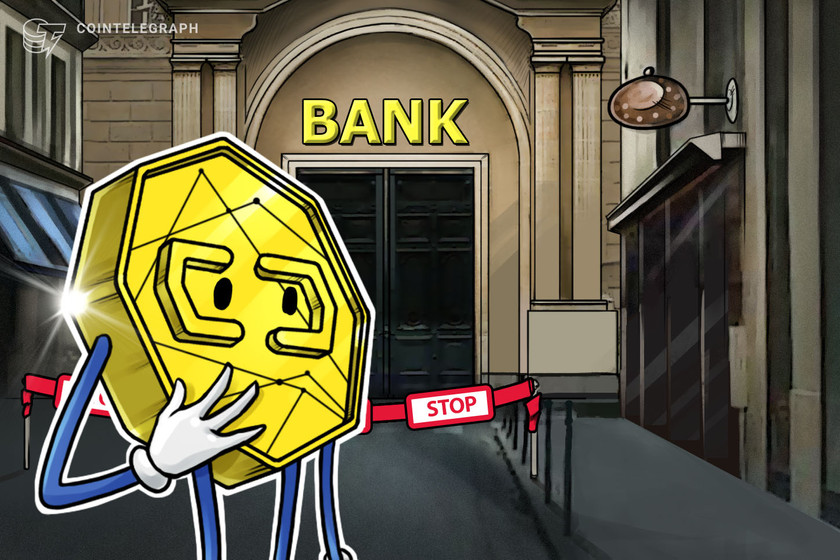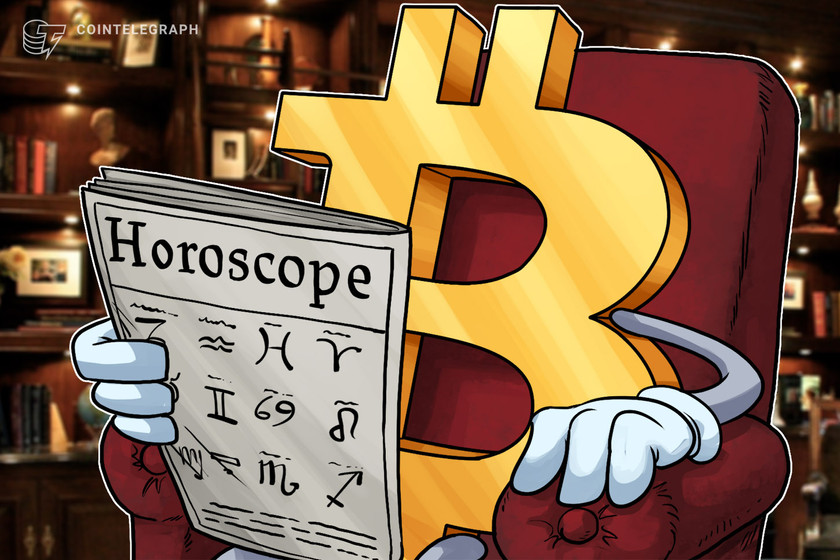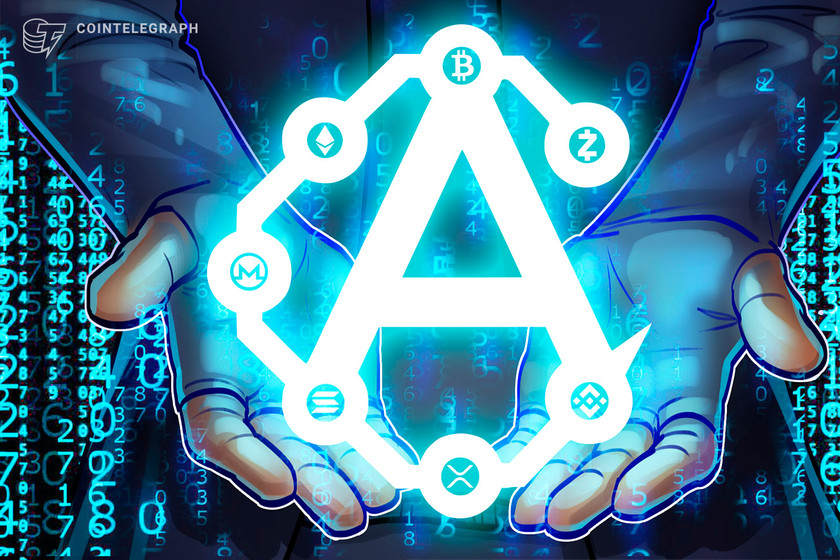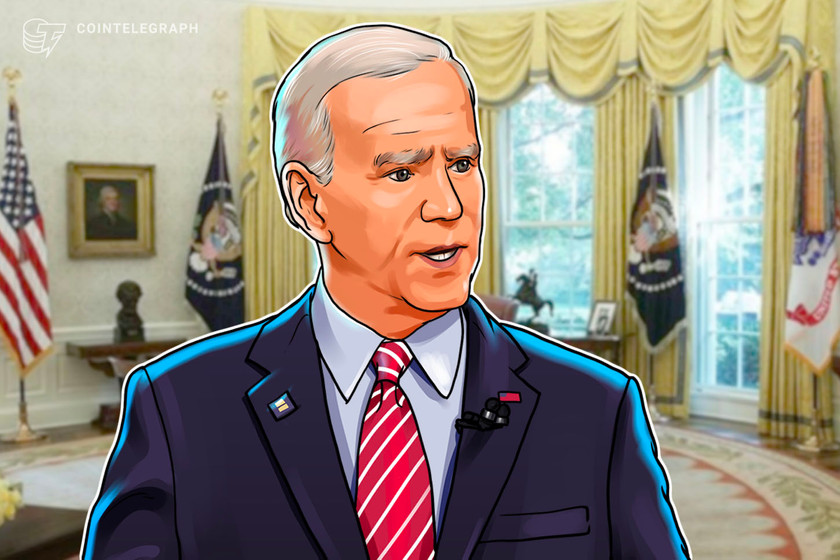After struggling to receive recognition of legitimacy within the mainstream zeitgeist during its sophomoric years, distributed ledger technology (DLT) now comprises the driving force behind a new wave of technological creative destruction. Today, we are going to take a look at some of the industries and processes that are most dramatically undergoing a transformation in response to the advent of blockchain technology.
Food
The opaque nature of global supply chains poses a significant challenge to efforts to ensure that the commodities, labor and inputs required to produce goods are from a safe and ethical origin. In order to tackle these issues, an increasing number of companies are exploring blockchain-based solutions.
On June 25, Walmart China announced plans for the movement of food products throughout its supply chain using the “Walmart China Blockchain Traceability Platform,” which was built on VeChain’s Thor blockchain.
Announced at the Traceability System Construction Seminar during the 2019 China Products Safety Publicity Week in Beijing, Walmart China indicated that “23 product lines” have been test-launched on the platform, with a further “100 product lines” spanning 10 different product categories expected to be incorporated onto the platform before the end of the year. Walmart China anticipates that 50% of its total sales of packaged meat will comprise products tracked using its traceability platform, in addition to 40% of its total sales of packaged vegetables and 12.5% of its total seafood sales by 2021.
The platform will also allow Walmart China customers to acquire detailed information pertaining to the production for a specific item by scanning the barcode of the product with their smartphone. Among the information that will be made available to consumers are facts about a product’s source, geographic location, logistics process and Walmart China’s product inspection report.
During the announcement, Walmart China representatives spoke of the possibility for distributed ledger technology to ensure the quality and safety of edible agricultural produce and to bolster consumer confidence through enhancing supply chain transparency, in addition to facilitating significant efficiency savings in production.
Across the pond, Walmart recently announced a collaborative endeavor alongside the United States Food and Drug Administration (FDA), IBM, Merck and KPMG to develop a proof-of-concept blockchain for the purpose of tracking prescription drugs.
On June 27, U.S.-based snack food company Brimhall Foods announced a partnership with Surge Holdings to deliver Brim’s products via a distributed ledger-based ordering system, with the company claiming that SurgePay’s blockchain network will allow it to access tens of thousands of new retailers.
Diamonds
In 2003, a United Nations General Assembly Resolution established the Kimberley Process Certification Scheme (KPCS), which sought to increase transparency in the diamond industry and inhibit the circulation of “blood diamonds” — i.e., diamonds mined in war zones and sold to finance insurgency or the activities of warlords.
Despite the KPCS seeing adoption among more than 80 countries since its establishment, the scheme has received significant criticism for failing to achieve its aims. In December 2011, nongovernmental organization (NGO) Global Witness abandoned the KPCS, following the scheme’s endorsement of unlimited diamond exports in Zimbabwe.
In May 2015, Australian entrepreneur Leanne Kemp founded Everledger — a digital registry for diamonds powered by the IBM Blockchain Platform. The mission of the registry is for Everledger to assess the diamonds using grading reports provided by the Gemological Institute of America.
In 2018, De Beers Group, an international corporation that mines and trades diamonds, announced that it would develop a blockchain-based traceability platform. Named Tracr, the platform would seek to track the diamond supply chain from the mine to the retail store. Later that year, Chow Tai Fook Jewellery Group and Alrosa, a partially Russian state-owned diamond mining company, announced that they had joined the Tracr pilot.
In January 2019, Russian state-backed media outlet Tass reported that Russia’s Ministry of Education and Science had introduced a DLT-enable platform for track and guarantee the authenticity of natural diamond products across its supply chain. The platform was developed by Russian startup Bitcarat, with each diamond given a unique code that is recorded on a distributed ledger. The ledger also records the history of previous transfers of ownership pertaining to tracked diamonds.
Securities
Many analysts are predicting that security token offerings (STOs) are poised to drive a revolution in fundraising processes, owing both to the efficiency savings afforded by DLT and the advantages that the adoption of distributed ledger-based systems have in place of the complex web of centralized ledgers that currently underpin the settlement of securities.
In the first quarter of 2019, market research firm Inwara estimated that the number of STOs had increased by 130% when compared with Q4 2018. STOs are expected to further break down barriers preventing small businesses from accessing venture capital, in addition to allowing issuers to access a global liquidity pool. However, despite the excitement surrounding STOs, the foundational infrastructure of the security token industry is still in its developmental stage.
The market for STOs is now emerging. During August 2018, an online retailer and early cryptocurrency adopter, Overstock.com, raised $134 million in an initial coin offering (ICO) for its security token exchange called tZero. The exchange was opened for trading during January of this year, with tZero’s proprietary token comprising the sole crypto asset available for trade at launch. TZero launched just weeks after SharesPost, a regulated alternative trading system and registered broker-dealer that facilitated the first-ever secondary trade of a security token in the form of Blockchain Capital’s BCAP tokens.
Art
In recent years, the art world has increasingly warmed to blockchain technology, embracing the innovative crowdfunding capabilities afforded by STOs. In July 2018, DLT platform Maecenas partnered with London gallery Dadiani Fine Art to sell virtual tokens representing fractional ownership of a piece of art for the very first time. The token sale saw 31.5% of Andy Warhol’s 1980 work “14 Small Chairs” auctioned in exchange for BTC and ETH — valued at approximately $5.6 million.
Several months later, Maecenas announced that it had partnered with John McAfee and crypto asset exchange Ethershift.io to conduct what it described as “the first ‘perpetual’ digitalization and tokenization” of a Picasso artwork. The auctioning process saw the digital artwork represented as a single ERC-721 token, with a fixed number of ERC-20 tokens distributed to designate ownership of the physical asset. Maecenas’ founder and CEO, Marcelo García Casil, stated: “As an analogy, you could think of the ERC-721 as the certificate of incorporation of a company, and the ERC-20 tokens as the company shares.”
In November 2018, Christie’s New York became the first auction house to record sales using DLT, with its $318 million sale of a Barney A. Ebsworth collection being recorded using Artory’s blockchain-based registry. Artery’s registry tracks the histories and archival material pertaining to a piece of art, while also facilitating anonymous transactions between buyer and seller.
The following month, Liechtenstein-based TheArtToken announced that it had raised over $11 million through its TAT token sale. The TAT tokens represent fractional ownership in a curated collection of post-war and contemporary art.
Real estate
During the San Francisco Blockchain Week 2019, it was announced that a security token offering had raised $18 million in venture capital to purchase a fragmented equity stake in a resort in the U.S. city of Aspen.
The offering, dubbed Aspen Coin, saw digital tokens issued via the crowdfunding website Indiegogo, allowing accredited investors to purchase Aspen Coin tokens, which are compliant with U.S. Security and Exchange Commission (SEC) regulations. Each Aspen Coin was listed at the price of $1, with minimum investments set at $10,000.
When announcing the success of Aspen Coin, Slava Rubin, the founder of Indiegogo and president of asset management company Elevated Returns, who assisted in the execution of the offering, spoke of the potential for security tokens to expand the number of investors exposed to real estate:
“You’re actually talking about a real asset that people are paying hundreds of dollars or thousands of dollars every night to stay in, and this already makes tons of revenue. It (real estate tokenization) fragments the asset. If you wanted to buy the St. Regis Aspen before fragmentation, you would have had to write a check for $250 to $300 Million. That limits the number of people that can actually have exposure to the asset.”
As of this writing, the STO monitoring service Stoscope estimates that there are currently 13 active real estate security offerings providing exposure to a range of investment products, including real estate investment trusts and fragmented ownership in student accommodation.
Land registries
The immutability and transparency of distributed ledgers provide an attractive solution to the management of land registries for both developed and developing nations. Many developing nations suffer from crippling issues pertaining to the management of land registries, particularly nations struggling with corruption, or those that have experienced regime changes in recent history. As a consequence, there are often conflicting claims of ownership to land, with some claimants possessing crude documentational evidence such as hand-written notes.
In May 2015, Texas-based companies Factom and Epigraph announced that they would work alongside the government of Honduras in what comprised the earliest attempts to build a blockchain-based land title registry. At the time, the initiative was described as only the second instance in which a national government had adopted blockchain technology. However, the project soon stalled, with Factom’s founder and chief architect, Paul Snow, attributing the failure of the venture “political issues.”
One year later, Bitfury began working alongside the National Agency of Public Registry in the Republic of Georgia in an initiative to use the Bitcoin blockchain to validate property-related government transactions. During May of this year, Marc Taverner, global ambassador and head of market development at Bitfury, estimated that more than 2 million land registry transactions have been recorded on the Bitcoin blockchain. Taverner said:
“If you’re a citizen now, you can have comfort that the government is operating the way in which they register land on the blockchain, which makes it entirely transparent and trustworthy. And a citizen now can trust the system rather than having to trust an individual or a particular politician.”
Also, there has been a recent proliferation in state institutions seeking to use blockchain to create digital land registries, with Propy Inc. launching a pilot project to record real estate conveyance documents in the Vermont city of the South Burlington and the Netherland’s Land Registry indicating that a blockchain-based solution will be incorporated into the nation’s registry by the end of 2021. In another instance, Australia’s New South Wales Land Registry Services engaged with blockchain technology provider ChromaWay to develop a DLT-based proof of concept for electronic property conveyancing.
Election technology
In 2014, Denmark’s Liberal Alliance became the first major political party to utilize blockchain technology to conduct an election. A blockchain was used for internal voting at the party’s annual meeting in Hvidovre, Copenhagen. At the time, a party committee member emphasized the benefits of employing DLT to execute the vote, stating:
“The blockchain removes the need for trust, because the technology can run autonomous without interference from humans, and it is at the same time open source and transparent, so that everybody can look under the hood and see what’s going on.”
Last year, a press release circulated by Agora, a Swiss startup comprising a distributed ledger-based voting platform, inspired reports claiming that Sierra Leone had become the first country to use a blockchain to conduct a national election on March 7, 2018. However, on March 18, 2018, the National Electoral Commission (NEC) of Sierra Leone issued a tweet asserting that the NEC had not used blockchain technology “in any part of the electoral process.”
In April 2018, the U.S. state of West Virginia, saw 144 military personnel stationed across 24 different countries participate in primary elections using blockchain-based voting platform Voatz, becoming the first U.S. jurisdiction to employ DLT to facilitate voting. The platform, which was developed by Symantec, was conceived in response to only 13% of overseas U.S. service members signing up to receive ballots during the 2016 federal election — of which only 9% were eligible.
One year later, it was announced that Denver would become the second U.S. state to utilize blockchain in a municipal election, again using Voatz to target overseas service members in addition to voters located internationally — 4,000 individuals in total.
In February 2019, it was revealed that the Australian state of South Australia engaged DLT firm Horizon State to provide the technology and support for a blockchain-based election. Last year, Horizon State was contracted by the Democratic Party of India to consult its base regarding policy positions, in addition to lending its platform for a leadership election conducted by New Zealand’s Opportunity Party.
Public investment
The DLT revolution is increasingly penetrating governance processes, with the potential efficiency savings and monitoring capabilities afforded by blockchain enticing adoption among many government institutions.
Brazil’s National Bank for Economic and Social Development (BNDES) has been in the development of a virtual currency for the purpose of augmenting the transparency of public spending since late 2018. Named BNDESToken, the token comprises an ether-based stablecoin that is pegged to the Brazilian real — with BNDES holding a monopoly over both the issuance and redemption of the tokens.
Related: As Brazil’s Economy Risks Recession, Regulators and Banks Implement Blockchain
On June 3, Brazilian media outlet State of Sao Paulo reported that Elo Company, a film production company known for its work on Alê Abreu’s Oscar-nominated “Boy and the World,” had participated in a proof of concept for the BNDESToken initiative. BNDES has hired Elo Company to produce a documentary, with BNDESToken expected to be issued to finance many aspects of the film’s development. The proof of concept comprised the simulation of payment of four screenwriters using BNDESToken.
The BNDESToken initiative has been praised by several actors involved in the pilot for increasing the transparency surrounding the distribution of public funding, with the president of Elo Company, Sabrina Nudeliman, stating that the platform provides “real-time accountability.” BNDES systems analyst Fabiano Mattos has argued that the BNDESToken both helps the Brazilian development bank measure the efficacy of its loan issuance and facilitates public monitoring of the society-wide impact and reach of its spending. Mattos asserted:
“It is publicly and irrefutably possible for a citizen, and society as a whole, to monitor the disbursements of public money made by the BNDES — and also to see the impact of this action on the various actors of the Brazilian economy. BNDESToken would vastly improve the way we can measure effectiveness of BNDES funding.”
Financial aid
NGOs are increasingly favoring financial aid over material provision, with Australian media outlet Micky reporting that approximately 70% of Syrian refugees have been forced to sell in-kind donations for cash in order to conduct the purchases required by their personal circumstances. However, the issuance of financial aid is marred by a number of challenges, including long waiting times for distribution and verification processes to be established, and poor monitoring and reporting capabilities that obfuscate the ability for donors to verify the efficacy of their donations.
In May 2019, Oxfam International conducted a month-long trial of a disaster relief program in the island nation of Vanuatu that sought to harness DLT to improve the efficiency and outcomes in distributing financial aid. Named UnBlocked Cash, the pilot saw 200 citizens of the natural disaster-prone nation issued tap-and-pay cards loaded with approximately 4,000 Vanuatu vatu (roughly $50) worth of “e-tokens” backed by MakerDAO’s DAI stablecoin. Thirty-four vendors participated in the project, including local stores and schools.
Related: From Clean Water Supply to Rebuilding Notre Dame: Crypto and Blockchain in Charity
The pilot was deemed a success by Oxfam, with the trial’s Vanuatuan participants describing the program as the preferred mode for the delivery of financial aid in future — attributing such to greater ease of use when compared with previous cash aid programs. The enrollment process for UnBlocked Cash took less than six minutes, whereas previous Oxfam cash-assistance programs in Vanuatu have involved approximately hour-long wait times for enrollment. More than 2,000 transactions were recorded during the program.
Following the pilot, Oxfam Australia’s humanitarian lead, Joshua Hallwright, told Cointelegraph that it is “highly likely that Oxfam will use stablecoins or other distributed ledger technologies to provide cash aid in disaster responses in the future, either in Vanuatu or elsewhere.”
Cross-border settlements
While facilitating frictionless cross-border remittances at an individual level has long-comprised a fundamental mission of cryptocurrency, a number of governments and private companies have sought to create centralized blockchain transborder settlements.
In May of this year, the Bank of Canada (BoC) and the Monetary Authority of Singapore (MAS) concluded the first trial of cross-border payments using central bank digital currencies on a blockchain platform.
The trial comprised the linking of BoC’s and MAS’ respective distributed ledger platforms, Jasper and Ubin, using hashed time-locked contracts — facilitating trustless payment-versus-payment (PVP) settlement. Accenture and JPMorgan Chase supported the project by assisting in the development of their respective blockchain platforms, upon which Jasper and Ubin were built. The central banks described the pilot as showcasing “great potential to increase efficiencies and reduce risks for cross-border blockchain payments,” with a joint report published by the BoC and MAS stating:
“A fragmented world, with differing standards, processes, norms, and regulations is the key challenge in cross-border payments today. DLT could offer an easier and faster path towards adoption than a centralized approach because it can leave the different jurisdictions involved in control of their portion of the network while allowing for tight integration with the rest of the network.”
In June 2019, Fnality International announced that its Utility Settlement Coin (USC) project raised $63.2 million in its Series A financing round. The USC project comprises an endeavor on the part of 14 financial firms to develop a digital token for cross-border settlement. Fnality Group’s membership includes Banco Santander, BNY Mellon, Barclays, CIBC, Commerzbank, Credit Suisse, ING, KBC Group, Lloyds Banking Group, MUFG Bank, Nasdaq, Sumitomo Mitsui Banking Corporation, State Street Corporation and UBS.
Related: Bank to Basics: USC Project Seeks to Disrupt Traditional Wholesale Banking
Disrupting the organization of daily life
With blockchain technology offering unprecedented opportunities to augment the efficiency and transparency of complex and global systems, DLT is increasingly disrupting how many processes underpinning the organization of daily life are conducted. From how cross-border trade is conducted to how food finds its way to one’s plate, blockchain is redefining the systems that are fundamental to the operations of contemporary society. However, the examples above only cover a small number of the most high-profile applications for blockchain technology, with DLT currently driving widespread creative destruction across nearly all sectors of economic activity.









